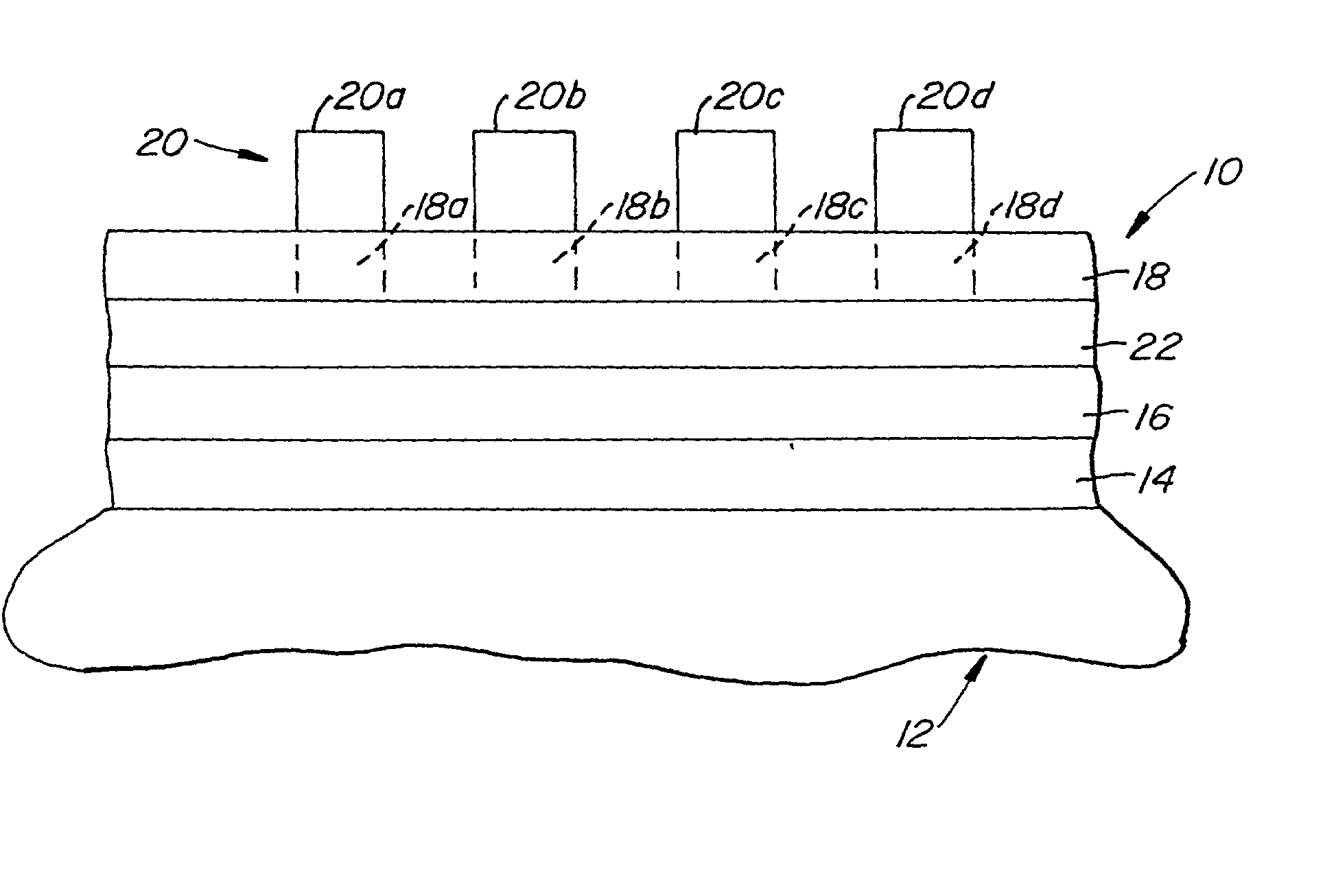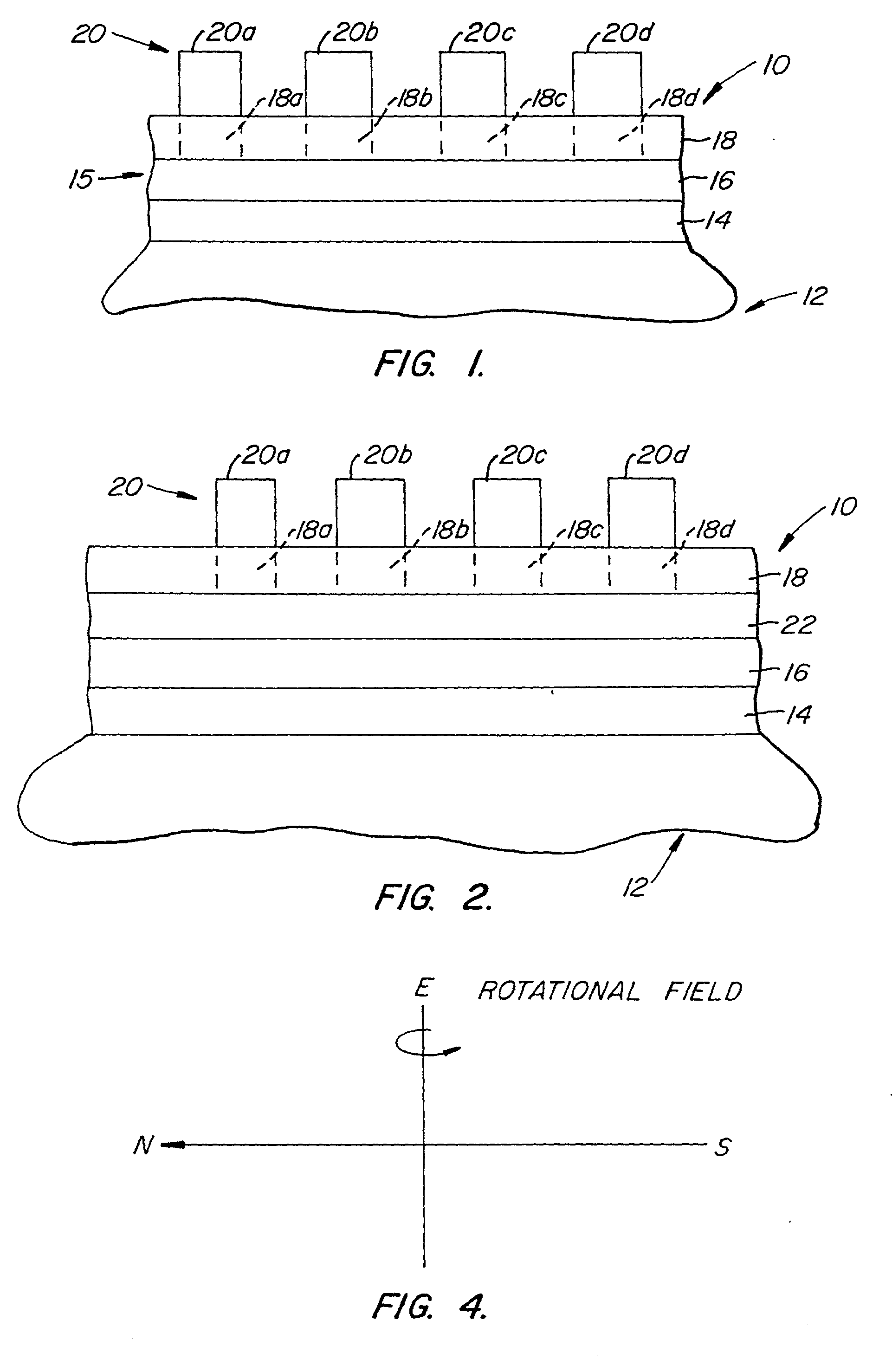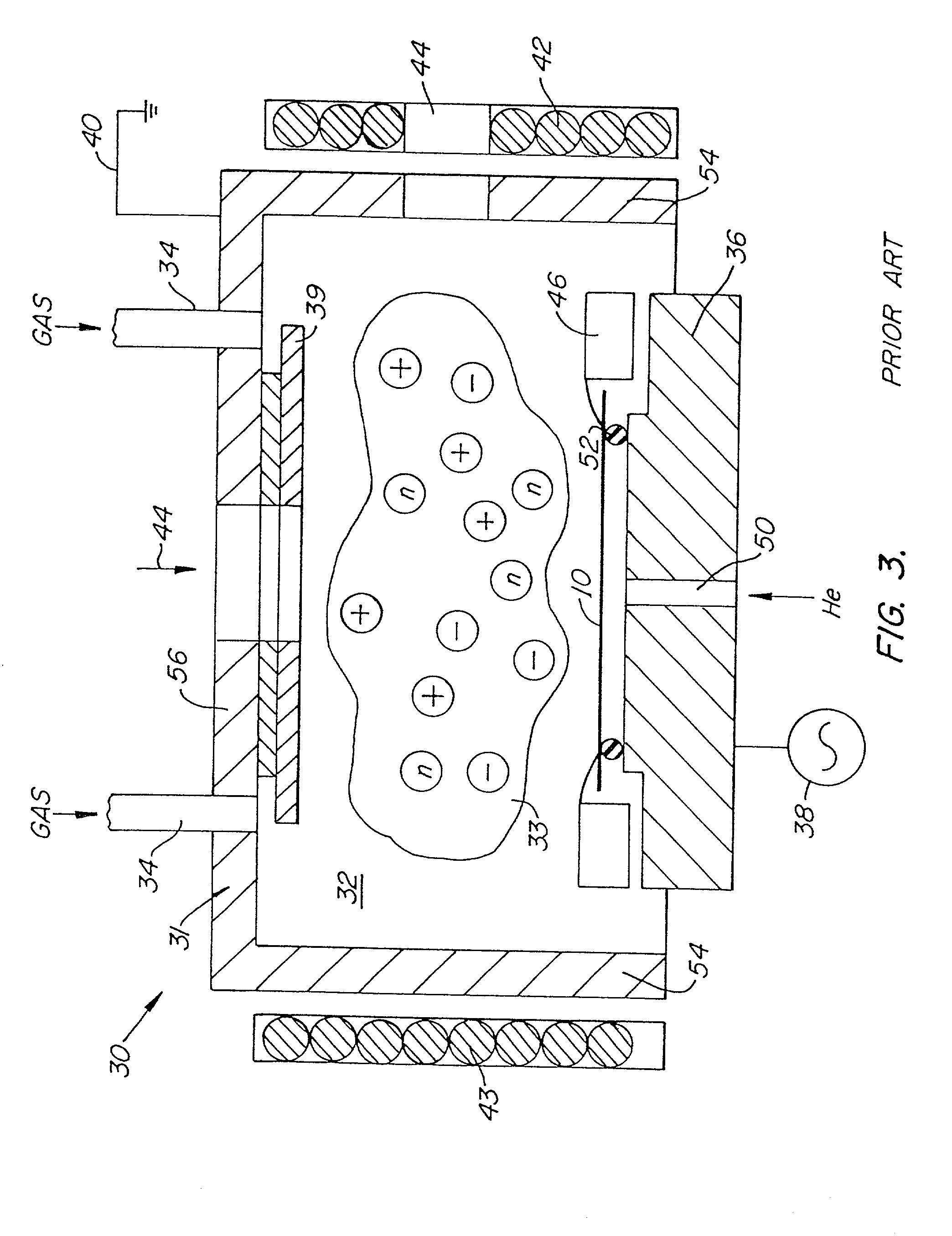Masking methods and etching sequences for patterning electrodes of high density RAM capacitors
a patterning electrode technology, applied in the field of masking methods and etching sequences for patterning electrodes of high density ram capacitors, can solve the problems of deteriorating processing accuracy, insufficient fine pattern processing precision of isotropic etching, and difficulty in performing submicron patterning of platinum electrodes
- Summary
- Abstract
- Description
- Claims
- Application Information
AI Technical Summary
Problems solved by technology
Method used
Image
Examples
example i
[0256] A test semiconductor wafer was formulated with the following film stack:
0.8 .mu.m patterned PR (photoresist) / 5000 .ANG. Oxide / 1000 .ANG. Ti / 1000 .ANG. Pt / 300 .ANG. TiN
[0257] The feature size of the patterned PR test semiconductor wafer was 0.3 .mu.m block and 0.25 .mu.m spacing. The oxide mask (i.e., the mask layer) was opened in the oxide etch chamber of a plasma processing apparatus sold under the trademark Oxide Etch MxP Centura.TM., owned by Applied Materials Inc., 3050 Bowers Avenue, Santa Clara, Calif. 95054-3299. The etchant gas for opening the oxide mask comprised about 68% by volume Ar and about 32% by volume CHF.sub.3. The reactor and process conditions were as follows:
37 Reactor Conditions Pressure 60 mTorr RF Power 850 watts Rotational Magnetic Field 40 Gauss Temperature of Test Wafer 100.degree. C. Oxide Mask Etch Rate 3000 .ANG. / min Process Conditions Based on the Flow Rate of Ar and CHF3 CHF.sub.3 50 sccm Ar 100 sccm Pressure, mTorr 60 mTorr RF Power Density 85...
example ii
[0263] A test semiconductor wafer was formulated with the following film stack:
0.8 .mu.m patterned PR (photoresist) / 5000 .ANG. Oxide / 600 .ANG. TiN / 2000 .ANG. Pt / 300 .ANG. TiN
[0264] The feature size of the patterned PR test semiconductor wafer was 0.25 .mu.m block and 0.2 .mu.m spacing. The oxide mask (i.e., the mask layer) was opened in the oxide etch chamber of a plasma processing apparatus sold under the trademark Oxide Etch MxP Centura.TM., owned by Applied Materials Inc., 3050 Bowers Avenue, Santa Clara, Calif. 95054-3299. The etchant gas for opening the oxide mask comprised about 68% by volume Ar and about 32% by volume CHF.sub.3. The reactor and process conditions were as follows:
41 Reactor Conditions Pressure 60 mTorr RF Power 850 watts Rotational Magnetic Field 40 Gauss Temperature of Test Wafer 100.degree. C. Oxide Mask Etch Rate 3000 .ANG. / min
[0265]
42 Process Conditions Based on the Flow Rate of Ar and CHF.sub.3 CHF.sub.3 50 sccm Ar 100 sccm Pressure, mTorr 60 mTorr RF Pow...
example iii
[0272] A test semiconductor wafer was formulated with the following film stack:
1.2 .mu.m patterned PR (photoresist) / 5000 .ANG. TEOS / 200 .ANG. TiN / 2500 .ANG. Pt / 300 .ANG. TiN / 500 .ANG. SiN.
[0273] The feature size of the patterned PR test semiconductor wafer was 0.35 .mu.m line and 0.35 .mu.m spacing. The TEOS mask (i.e., the mask layer) was opened in the oxide etch chamber of a plasma processing apparatus sold under the trademark Oxide Etch MxP Centura.TM., owned by Applied Materials Inc., 3050 Bowers Avenue, Santa Clara, Calif. 95054-3299. The etchant gas for opening the TEOS mask comprised about 68% by volume Ar and about 32% by volume CHF.sub.3. The reactor and process conditions were as follows:
47 Reactor Conditions Pressure 60 mTorr RF Power 850 watts Rotational Magnetic Field 40 Gauss Temperature of Test Wafer 100.degree. C. TEOS Mask Etch Rate 3000 .ANG. / min Process Conditions Based on the Flow Rate of Ar and CHF.sub.3 CHF.sub.3 50 sccm Ar 100 sccm Pressure, mTorr 60 mTorr RF ...
PUM
| Property | Measurement | Unit |
|---|---|---|
| temperature | aaaaa | aaaaa |
| dielectric constant | aaaaa | aaaaa |
| thickness | aaaaa | aaaaa |
Abstract
Description
Claims
Application Information
 Login to View More
Login to View More - R&D
- Intellectual Property
- Life Sciences
- Materials
- Tech Scout
- Unparalleled Data Quality
- Higher Quality Content
- 60% Fewer Hallucinations
Browse by: Latest US Patents, China's latest patents, Technical Efficacy Thesaurus, Application Domain, Technology Topic, Popular Technical Reports.
© 2025 PatSnap. All rights reserved.Legal|Privacy policy|Modern Slavery Act Transparency Statement|Sitemap|About US| Contact US: help@patsnap.com



